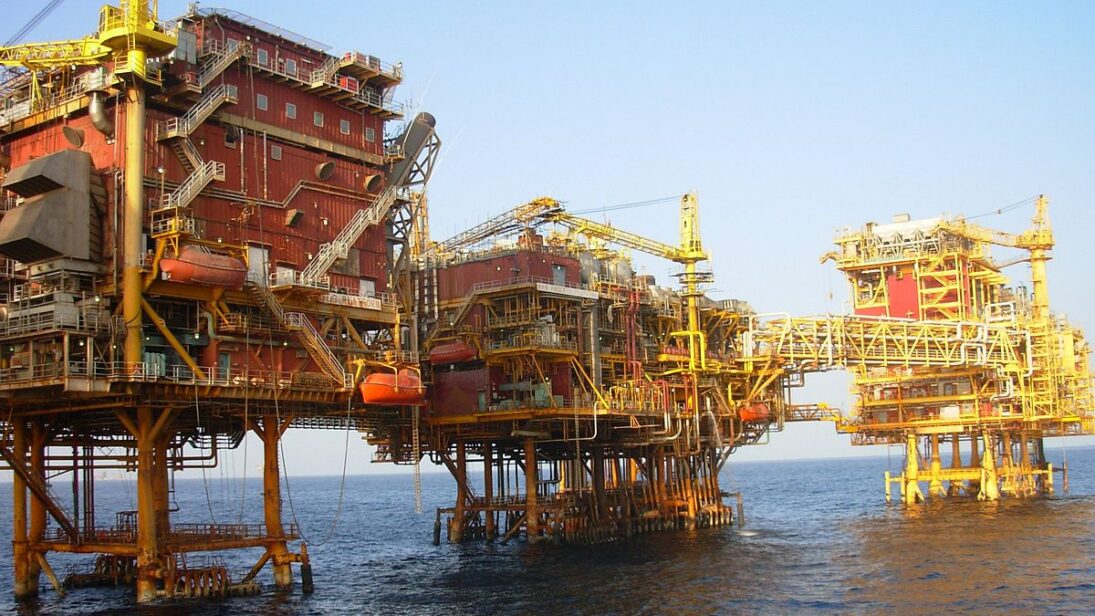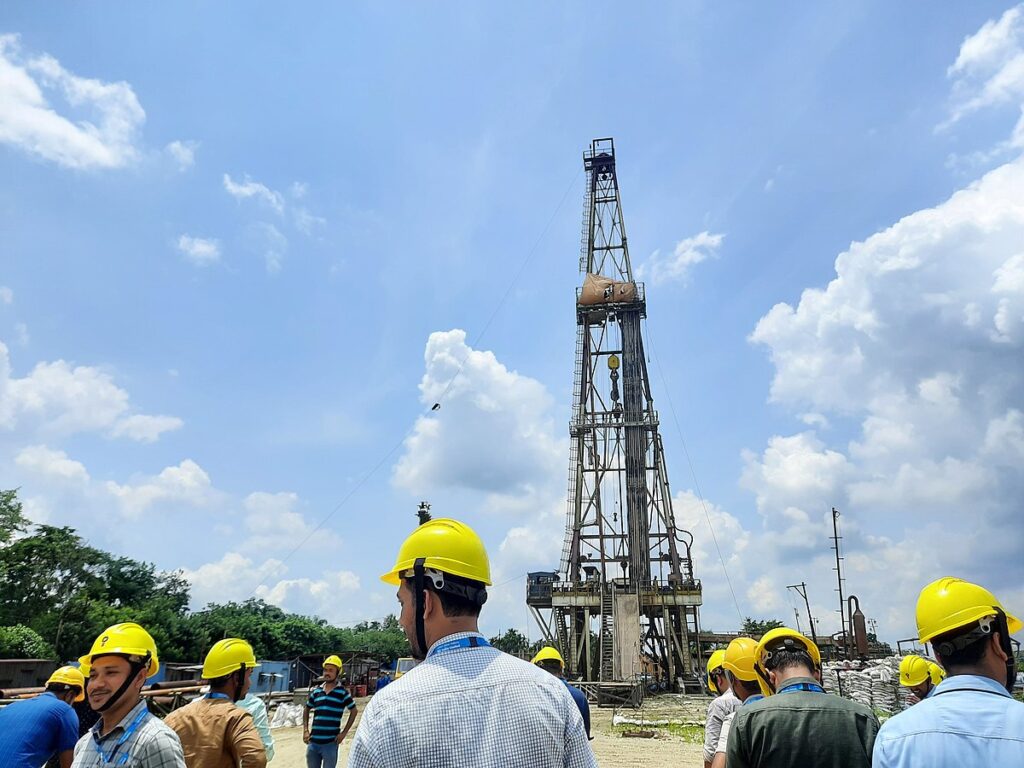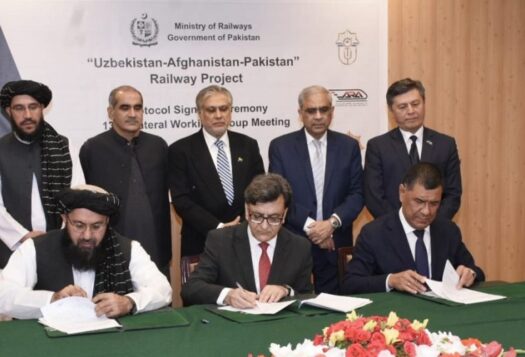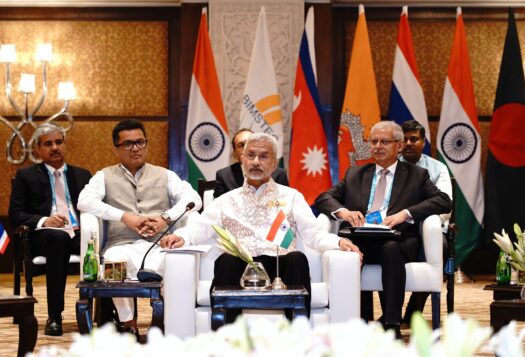
Global oil politics today are creating political and economic allegiances that are reminiscent of the Cold War era. Russia, China, the United States, and the Middle East have created a global Petro-bloc which is highly politicized, with all parties trying to exert influence over the other. This internal strife ultimately benefits China by allowing it to extend its influence in oil markets and potentially establishing Petro-yuan as a major oil trading currency. There are significant effects of these changing geopolitical dynamics in South Asia as this predicament negatively impacts inflation and economic concerns that Pakistan and India have had since the beginning of the pandemic. The economic chokehold created by this bloc will eventually push South Asian states like India and Pakistan to take diplomatic risks, a situation neither of the states can afford at this juncture.
Oil export is dependent on two vital factors: availability of natural crude oil reserves and a country’s capacity to extract and supply oil. Between proven oil reserves, ability to extract, and willingness to export lies the slippery slope of oil politics. The driving force behind the competitiveness in oil markets is the simple principle of supply and demand, a principle reiterated strongly by a post-pandemic economic recovery. During the pandemic, as economic activity slowed, oil prices plunged drastically which devastated global oil dependence and paved the way for an aggressive recovery once pandemic restrictions were over. This meant that the conventional oil suppliers in the Organization of Petroleum Exporting Countries (OPEC) would potentially rebound with remarkable results for their own and global economies.
For South Asia, this situation presents a grim situation as global oil demands steadily rise giving oil producing countries the impetus to keep oil prices high. For net exporters of oil, selling this resource is a guaranteed mechanism to recover from economic downtime caused by the pandemic.
Global oil demands are expected to continue to increase as states rehabilitate from the pandemic and restart their economic activity as per pre-pandemic standards. For South Asia, this situation presents a grim situation as global oil demands steadily rise giving oil producing countries the impetus to keep oil prices high. For net exporters of oil, selling this resource is a guaranteed mechanism to recover from economic downtime caused by the pandemic. However, for net importers — which includes all South Asia — growing competition and disagreements between oil producers and suppliers presents immense challenges.
Understanding Petropolitics: The Rise of China and Petro-yuan
Petropolitics have recently been at the forefront due to two major events: the Russian invasion of Ukraine which lead to sanctions on imports of Russian oil and the United States insistence on increasing oil production which was met with Saudi-led OPEC’s resistance. The United States urged OPEC to keep oil prices low by increasing production even at risk to its own petrodollar enterprise in order to weaken Russia’s economy. However, Middle Eastern states did not want to artificially deflate oil prices and have continued to cut production. Considering this disagreement intensifies and OPEC continues to raise oil prices, China may take advantage of this situation and offer both a competitive price for oil purchases and introduce its own currency, the Petro-yuan, as the alternative legal tender for such transactions.
Already, Chinese petrochemical industry is making significant investments in the Middle East. Aramco recently acquired stakes in Rongsheng Petrochemicals, China has made massive investment pledges in Oman’s Duqm Refinery Project, China’s National Petroleum Corporation is investing in Abu Dhabi’s National Oil Company and Qatar Energy has signed a major liquified gas export deal with Sinopec. These strategic investments allow China to influence almost all the major global oil chokepoints and thus puts Beijing in an excellent position to push for Petroyuan to be adopted as a trading currency. If Petro-yuan does become a reality and China is able to coax OPEC+ into bidding to replace Dollar with Yuan as the principal trading currency, India might have to rethink its China policy altogether.
Petropolitics, Petrocurrency and Global Oil Supply: The Conundrum for South Asia
China’s influence is growing in the petrochemical industry and its impact on MENA states is also noticeably increasing. With the current American policy pushing for massive reduction in oil prices and OPEC+ going in the opposite direction, South Asia’s major oil importers are forced to either redraw their strategies towards China or are compelled to look towards Russia for satiating their petrochemical needs.
If South Asia decides to take sides in this new petrocurrency cold war, it risks losing either its economic capacity to procure oil due to high prices or would have to completely redraw global petrocurrency standards and risk diplomatic repercussions. Fluctuating oil prices and an unstable production-distribution system means that states that are energy deficient will have to significantly readjust their procurement procedures for petroleum prices; a move that will surely damage their post-pandemic economic recovery.
An argument can be made that a drastic shift in currency for oil commodity trading may not happen so abruptly. States are already accustomed to trading in dollars and may not be keen to revise their entire economic roadmap for a new currency to substitute or completely replace existing trading systems. States in the Middle East, especially Saudi Arabia, may not be interested in this currency transition despite their current disagreements with Washington DC simply because it may not be good for business. The consideration for alternative currency, however, is surely there and it largely depends on how Beijing plans to introduce it in the global economy. The 2022 Fiscal Year saw India, Pakistan and Bangladesh record an immense surge in their oil import bills. This means that as their dependence on oil imports increases, the US-China-OPEC+ indecision increasingly damages their possibilities of economic recovery. Therefore, it is critical to assess the introduction of this currency on major importers of oil in South Asia — Pakistan and India.
Pakistan and India in Petropolitics: Choices and Consequences
Pakistan may find it suitable or even desirable to have Yuan as the currency in which oil imports can be sought, owing to its comparative trading prices as opposed to US Dollar. However, it would not want to strain ties with the United States any further for risk of diplomatic isolation. Islamabad’s current predicament is to balance its relationship with the United States and China which means it would make it even more difficult to opt into new geopolitical arrangements. Pakistan’s diplomatic adventurism by scheduling a visit to Russia last year raised eyebrows in the United States. Additionally, Pakistan’s recent successful oil deal with Russia for discounted oil is going to add to the tensions with Washington.

For New Delhi, development of alternative currencies for international commodity trading, especially petroleum products, posits other challenges. India’s bid towards economic growth in a post-pandemic setting requires it to import more oil for its industrial capacity. This has kept India as South Asia’s leading oil importer this year but where a major portion of this import will continue to come from is an issue. Indian oil imports are close to surpassing the international oil import cap imposed on Russian oil, but for New Delhi this cap only limits its growth — a risk that India may not be so keen on taking considering its economic needs. This global approach by Beijing will have a serious impact on oil import in South Asia, especially India. New Delhi’s choices will be limited to either accepting a prospective Petro-yuan or increasing trade with Russia — both decisions attracting ire from Washington DC. If India does choose to opt into importing oil from the U.S., managing price of this trade will surely disrupt chances of economic recovery and will also impact inflation.
The Way Forward
Pakistan may be able to extract some benefit out of these shifting global dynamics owing to its strategic tilt towards China. However, in doing so, Pakistan is at danger of completely isolating itself from the United States. For New Delhi, choosing between Petro-yuan and cheap Russian oil might influence its internal political dynamics and upcoming elections. For the Indian economy and the government’s position after the 2024 elections, global oil politics and the impact of a possible petrocurrency shift will determine the trajectory of its energy independence strategy. Until then, New Delhi’s continued increase in oil imports will remain a determining factor in pushing it to consider alternate currencies and oil imports from Russia and a similar trend can be discerned of Pakistan. As the United States and OPEC countries continue to battle out oil production and cost of export, this deadlock can adversely affect South Asian economies in terms of inflation and introducing a cost of living crisis which is already taking place in certain parts of the world.
Until then, New Delhi’s continued increase in oil imports will remain a determining factor in pushing it to consider alternate currencies and oil imports from Russia and a similar trend can be discerned of Pakistan.
Pakistan’s choices are slimmer than that of India as it is yet to recover from an almost economic collapse, therefore, reducing its import bill will be a top policy priority. Pakistan’s dependence on importing oil will not reduce in the foreseeable future and its current economic condition does not provide much relief if it continues to trade with dwindling dollar reserves. Pakistan can shift a portion of its oil import bill towards the yuan to ease on the dollar deficiency it currently faces and can use its yuan clearing deal to that effect. Seeking to swap some portion of petrodollar dependence wit Petro-yuan provides relief that can be capitalized for economic recovery before a more permanent currency alternative can be established.
For India, a similar situation is in effect where it can accelerate its own growth with alternate currency agreements as it has already indicated to do so. South Asia’s energy needs and oil imports are essential parts for its economic recovery and recuperation from the post-pandemic economic environment. South Asia can neither afford a US-OPEC+ standoff nor it can continue to pursue expensive oil imports while simultaneously balancing its own economic recovery projects. Economic instability and unstable growth rate are primary challenges for South Asian states, therefore, India and Pakistan need to look for options where they can procure oil conveniently without stressing or straining their economy.
Also Read: Implications of the Iran-Saudi Deal for Pakistan
***
Image 1: Oil Platforms via Wikimedia Commons
Image 2: Drilling rig in India via Wikimedia Commons


